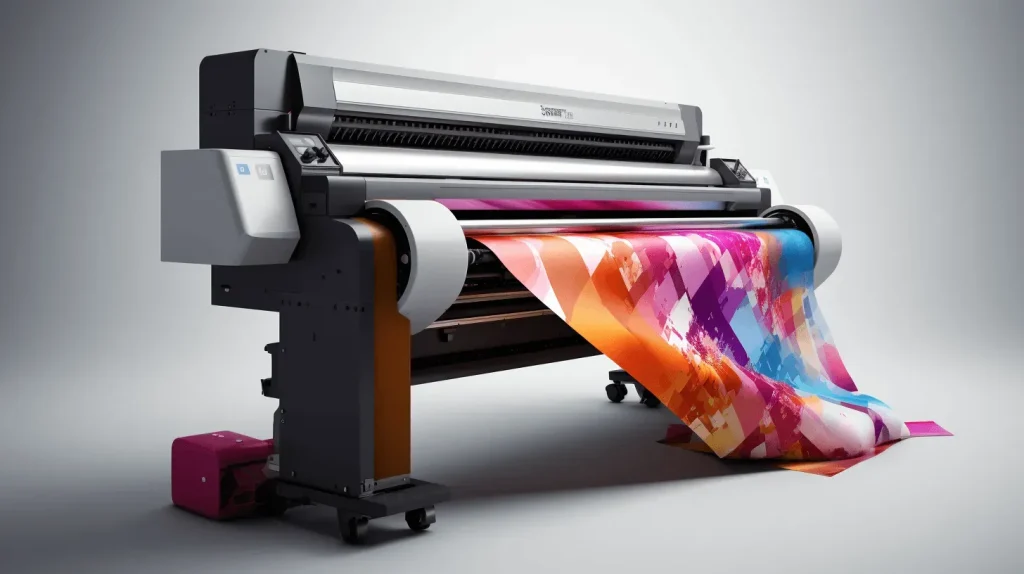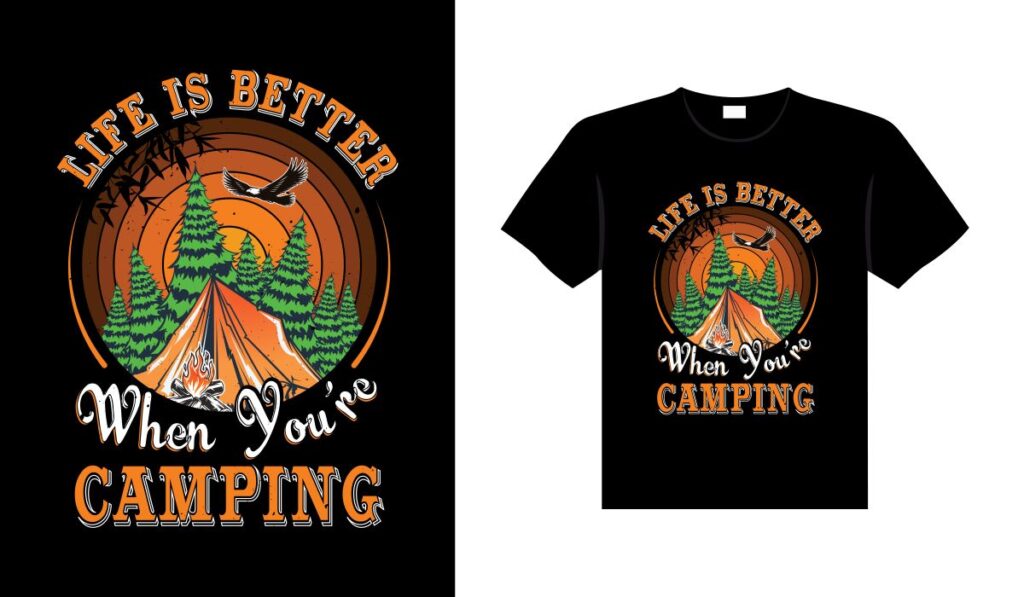DTF printing, or Direct to Film printing, is a groundbreaking advancement in the realm of custom apparel that is transforming how designs are applied to garments. Unlike traditional methods, DTF printing employs a unique process where designs are printed onto a film before being transferred to fabric, offering versatility and exceptional quality. This innovative technique stands out due to its cost-effectiveness and capacity to produce vibrant, durable prints across various substrates, such as cotton and polyester. As businesses increasingly turn to sustainable printing methods, DTF printing aligns perfectly with the growing demand for eco-friendly processes in apparel production. With its ability to handle complex designs and small runs efficiently, DTF printing is rapidly becoming the go-to option for entrepreneurs seeking to elevate their custom apparel offerings.
Also known as direct-to-film printing, this modern printing technique is redefining the landscape of apparel printing technology. By utilizing a film to transfer images onto garments, this method provides unparalleled quality and flexibility, making it ideal for customizing clothing lines. This approach enhances the creativity and efficiency of custom apparel production, catering to a wide range of fabric types and design complexities. Moreover, its cost-effective nature appeals to small and medium enterprises looking to compete in the dynamic fashion market. With sustainability in mind, many companies are adopting this technology, aligning with consumer preferences for environmentally-conscious printing solutions.
Understanding the Mechanics of DTF Printing
DTF printing, or Direct to Film printing, involves a two-step process that enhances the capabilities of custom apparel production. First, a design is printed onto a special film using a high-quality DTF printer that utilizes vibrant inks. This film serves as a medium that is not only easy to handle but also allows for intricate details that traditional methods may struggle to capture. Once the design is transferred to the film, it is heated and then applied onto the fabric, adhering the ink firmly while ensuring durability and quality.
What sets DTF printing apart is its versatility across various fabric types, including cotton, polyester, and blends. This technology enables the production of soft-feel prints that resist cracking and fading, making it ideal for creating garments that maintain their aesthetic over time. As demand for customized apparel grows, understanding how DTF printing works becomes crucial for businesses aiming to stay competitive in the market.
Cost-Effective Advantages of DTF Printing
One of the most significant benefits of DTF printing is its cost-effectiveness, which is particularly appealing to small and medium enterprises. Compared to other printing methods like Direct to Garment (DTG) printing, DTF printing requires lower initial equipment investment. This makes it accessible for startups looking to enter the custom apparel market without breaking the bank. Additionally, the quick setup times for DTF printing reduce overhead costs, enabling businesses to produce items on demand.
Moreover, with the ability to print in high volumes without compromising quality, enterprises can optimize their resources effectively. DTF printing eliminates the need for multiple screens required in screen printing, significantly simplifying the workflow. This streamlined approach not only cuts down on costs but also allows businesses to offer competitive pricing to consumers, ultimately increasing profit margins while meeting market demands.
Sustainability in DTF Printing Practices
As consumers become increasingly eco-conscious, businesses must adapt to sustainable practices to maintain competitive advantages. DTF printing stands out by presenting an eco-friendly option when compared to other traditional printing methods. Many DTF printers utilize environmentally friendly inks and processes, aligning their production values with those of consumers who prioritize sustainability.
By incorporating sustainable printing technologies, companies not only cater to a niche market but also contribute to the broader movement towards responsible production in the apparel industry. This commitment to sustainability can significantly enhance a brand’s image, attracting more customers who are keen to support businesses with green values. As the custom apparel market shifts towards sustainable practices, embracing DTF printing can position companies as leaders in environmentally conscious production.
Technological Innovations in DTF Printing
The landscape of DTF printing is rapidly evolving, driven by advancements in printing technology that enhance efficiency and quality. Modern DTF printers are now capable of producing high-resolution images at a swift pace, enabling businesses to respond to urgent market demands effectively. Innovations such as faster drying times and improved ink adhesion are making DTF printing more reliable than ever.
These technological advancements not only improve the quality of the prints but also expand the possibilities of apparel printing technology. New features, including built-in color management systems and automated settings for various fabrics, allow for a more user-friendly experience. As these innovations continue to emerge, businesses leveraging new DTF capabilities are likely to stay ahead in the competitive custom apparel market.
Market Trends Driving DTF Printing Expansion
Recent market analyses indicate that the demand for DTF printing is poised for significant growth. This increase is primarily driven by the shift towards on-demand printing and the customization craze that characterizes the modern apparel landscape. As consumers seek unique and personalized products, DTF printing’s capabilities to create vibrant and tailored designs position it as a sought-after solution for entrepreneurs and established businesses alike.
Furthermore, as small businesses increasingly adopt DTF technology to offer niche products, the overall market for custom apparel is expanding. DTF printing not only caters to diverse client needs but also supports trends where consumers desire to express their individual styles. With such favorable market conditions, businesses investing in DTF technology can expect to see substantial returns driven by rising consumer expectations.
Customization Opportunities Through DTF Printing
One of the standout features of DTF printing is its unprecedented ability to customize designs easily and efficiently. This is particularly beneficial for businesses that aim to provide personalized items, whether for individual customers or corporate clients. DTF technology allows for intricate designs and a wide range of colors, ensuring that the final product truly reflects the customer’s vision.
Customization through DTF printing not only enhances customer satisfaction and loyalty but also opens up new revenue streams. Businesses can create one-of-a-kind pieces for events or specialized merchandise for branding campaigns, catering to a diverse array of tastes and preferences. This flexibility in production allows brands to stand out in the crowded custom apparel market by offering unique items that resonate with consumers.
Frequently Asked Questions
What is DTF printing and how does it differ from traditional apparel printing?
DTF printing, or Direct to Film printing, is a modern custom apparel printing method that transfers designs onto a film before applying them to garments. Unlike traditional screen printing or Direct to Garment (DTG) printing, DTF allows for more vibrant colors and intricate designs, especially on a variety of fabrics, including cotton and polyester.
Why is DTF printing considered a cost-effective solution for custom apparel?
DTF printing is deemed cost-effective because it requires a lower initial investment in equipment compared to DTG printing, and it eliminates the need for numerous screens and setup times for different colors. This efficiency in production makes it ideal for small and medium enterprises looking to enter the custom apparel market.
How does DTF printing support sustainable practices in the apparel industry?
Many DTF printers utilize eco-friendly inks and media, which aligns with the growing demand for sustainable printing options in the apparel industry. By adopting DTF technology, businesses can reduce their environmental impact while providing high-quality, customized products to conscious consumers.
Can DTF printing handle complex designs and small runs effectively?
Yes, DTF printing excels at producing complex designs with high detail and vibrant colors. It is particularly beneficial for small runs, making it a popular choice for businesses needing unique, customized apparel without the limitations of traditional printing methods.
What are the technological advancements in DTF printing that enhance its performance?
Advancements in DTF printing technology now include faster drying times, improved adhesion properties, and printers capable of high-volume production without compromising quality. These innovations have allowed DTF printing to grow rapidly within the custom apparel market, meeting increasing consumer demands.
How can businesses leverage DTF printing for customization and personalization?
DTF printing allows businesses to easily create customized apparel tailored to specific customer needs, whether for unique events or branded merchandise. This flexibility in customization enhances consumer experience and loyalty, making DTF a strategic choice for businesses looking to differentiate themselves in the custom apparel market.
| Key Point | Description |
|---|---|
| Overview of DTF Printing | Innovative method transferring designs onto film before applying to garments, noted for its efficiency and quality. |
| High-Quality Prints | Durable prints on various fabrics, soft to touch and resistant to fading; ideal for complex designs. |
| Cost-Effectiveness | Lower equipment investment than DTG printing, quick setup; beneficial for small businesses. |
| Eco-Friendly Options | Incorporates sustainable inks, aligning with consumer preference for eco-friendly production. |
| Technological Advancements | Innovations leading to faster production and better quality; supports market expansion. |
| Market Growth | Increasing adoption by SMEs driving demand; expected significant growth in the coming years. |
| Benefits for Businesses | Ability to fulfill custom orders quickly and efficiently, enhancing customer satisfaction. |
| Customization and Personalization | Unique offerings tailored to customer needs, improving their experience and loyalty. |
| Challenges in DTF Printing | Need for quality equipment and training; inventory management can pose challenges. |
Summary
DTF printing is revolutionizing the custom apparel industry by offering an advanced, efficient, and sustainable way to create high-quality prints. With its ability to produce vibrant designs on various fabrics, businesses can meet the rising consumer demand for personalized apparel. The cost-effectiveness of DTF printing allows small and medium enterprises to thrive without heavy investment, while also embracing eco-friendly practices that appeal to today’s environmentally-conscious shoppers. As this technology continues to evolve, businesses adopting DTF printing will not only enhance their product offerings but also ensure their competitiveness in a rapidly changing market.


